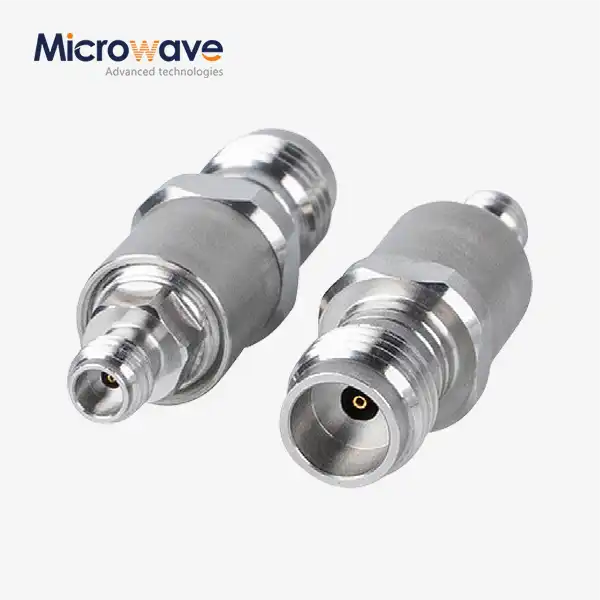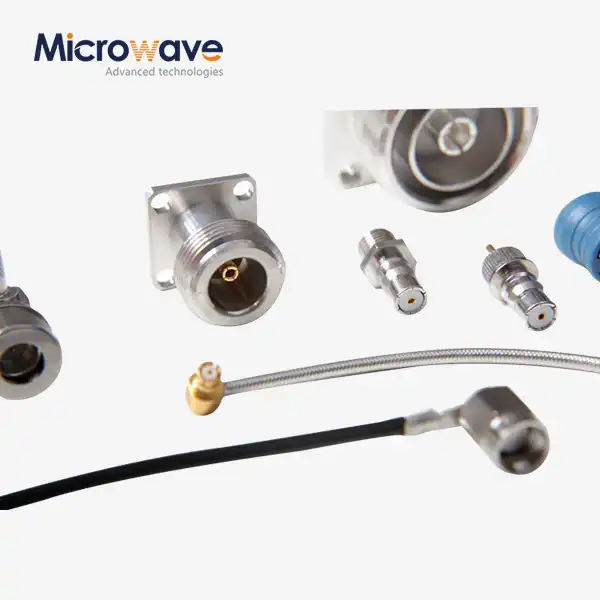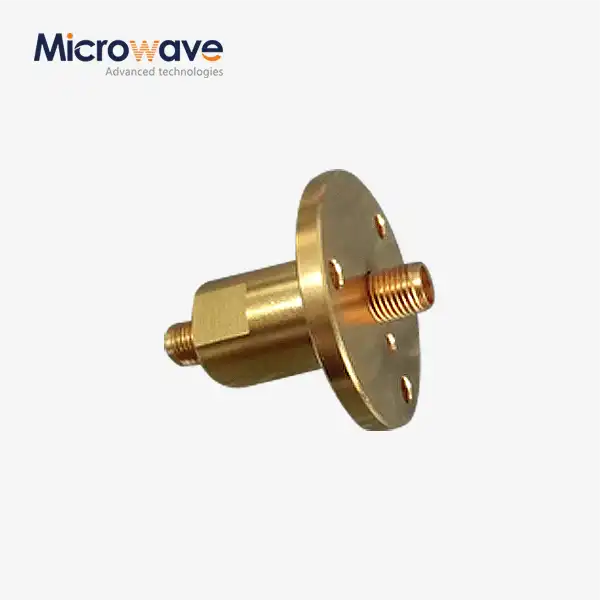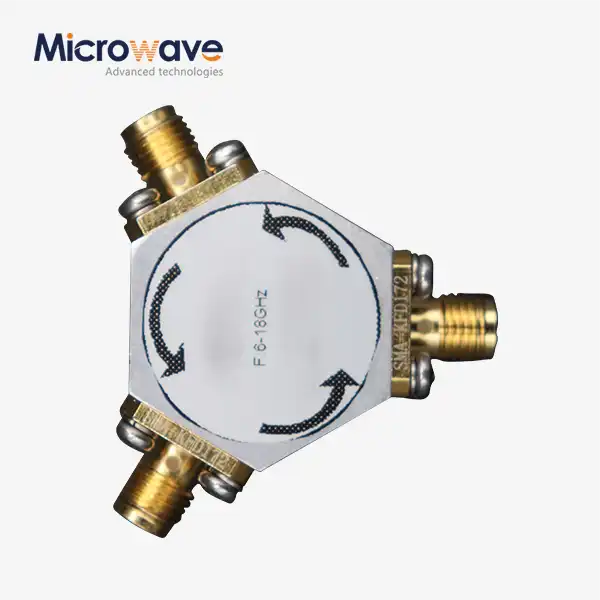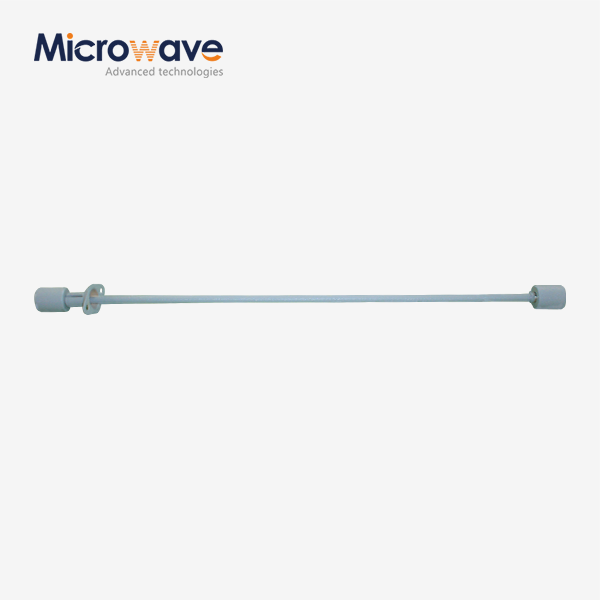What are the main components of a coaxial cable assembly?
Coaxial cable assemblies are sophisticated signal transmission systems that play a crucial role in modern electronics and communications. Understanding the key components of a Coaxial Cable Assembly is essential for engineers and technicians working with high-frequency applications. These assemblies consist of several precisely engineered parts working together to maintain signal integrity across various demanding environments. From the central conductor to the outer protective jacket, each component serves a specific purpose in ensuring reliable signal transmission while minimizing interference and loss.
The Core Components of Coaxial Cable Assemblies
The fundamental structure of a coaxial cable assembly involves several layers designed to work in harmony for optimal signal performance. Understanding these components helps in selecting the right cable for specific applications.
The Center Conductor
The center conductor is the heart of any Coaxial Cable Assembly, serving as the primary pathway for signal transmission. This component is typically made from highly conductive materials such as copper, silver-plated copper, or silver-plated aluminum, chosen specifically for their excellent electrical properties. The quality of the center conductor directly impacts the assembly's overall performance, particularly regarding signal loss and transmission efficiency.
In high-performance Coaxial Cable Assembly designs, Advanced Microwave Technologies Co., Ltd. uses oxygen-free copper conductors that offer superior conductivity with minimal signal degradation. The diameter of the center conductor is precisely calculated to maintain the desired impedance characteristics, commonly standardized at 50 Ohms or 75 Ohms depending on the application requirements. For applications requiring operation in the higher frequency ranges (up to 110 GHz), the center conductor dimensions must be controlled with exceptional precision to ensure consistent impedance along the entire cable length.
The geometry of the center conductor also plays a critical role in performance. While solid conductors offer better electrical characteristics at higher frequencies, stranded conductors provide greater flexibility for applications where the cable may need to bend or move during installation or operation. Engineers at Advanced Microwave Technologies leverage over 20 years of microwave product experience to optimize this balance between electrical performance and mechanical flexibility for each specific application, whether it's for telecommunications infrastructure, aerospace systems, or defense applications where reliability under harsh conditions is paramount.
The Dielectric Insulator
The dielectric insulator surrounds the center conductor and serves as both an electrical isolator and a structural support within the Coaxial Cable Assembly. This component fundamentally determines many of the cable's electrical characteristics, including its impedance, velocity factor, and signal propagation speed.
Advanced Microwave Technologies Co., Ltd. utilizes various high-performance dielectric materials in their Coaxial Cable Assembly products, with Polytetrafluoroethylene (PTFE or Teflon) being the premier choice for applications requiring minimal signal loss and excellent temperature stability from -55°C to +125°C. Other dielectric materials employed include Polyethylene (PE), which offers a good balance of performance and cost-effectiveness, and Foamed Polyethylene, which reduces the dielectric constant to improve the velocity factor and decrease attenuation.
The dielectric's physical properties significantly influence the cable's performance characteristics. For instance, a lower dielectric constant allows electromagnetic waves to travel faster through the cable, resulting in higher velocity factors approaching 85-90% of the speed of light for premium Coaxial Cable Assembly products. This is particularly important in time-sensitive applications such as radar systems and test equipment where signal timing is critical.
The dimensional stability of the dielectric also affects the consistency of impedance along the length of the cable. Advanced Microwave Technologies' manufacturing processes ensure tight tolerances in the dielectric extrusion process, maintaining impedance consistency that is crucial for minimizing signal reflections. This attention to detail in the construction of the dielectric layer is one reason why Advanced Microwave's Coaxial Cable Assemblies are ISO 9001:2008 certified and trusted in applications where signal integrity cannot be compromised, such as in satellite communications systems and high-frequency test environments where precise measurements depend on reliable cable performance.
The Outer Conductor and Shielding
The outer conductor and shielding layers represent critical components in a high-quality Coaxial Cable Assembly, performing the dual functions of completing the electrical circuit and protecting the transmitted signal from external electromagnetic interference (EMI). This component directly impacts the cable's shielding effectiveness, flexibility, and overall durability.
Advanced Microwave Technologies Co., Ltd. implements various shielding designs in their Coaxial Cable Assembly products, each optimized for specific application requirements. For maximum shielding effectiveness, a solid copper or aluminum tube provides unparalleled protection against signal leakage and external interference. However, this comes at the cost of reduced flexibility. For applications requiring greater mechanical flexibility while maintaining excellent shielding, braided shields consisting of woven copper wires are employed, with coverage percentages typically ranging from 60% to 95%. Premium Coaxial Cable Assemblies often feature multiple shielding layers, such as a combination of foil and braid, to achieve optimal performance across a broad frequency spectrum up to 110 GHz.
The shielding effectiveness of a Coaxial Cable Assembly is particularly important in dense electronic environments where multiple high-frequency systems operate in close proximity. Advanced Microwave's defense and aerospace-grade assemblies feature enhanced shielding designs that provide superior isolation, ensuring that critical communications and radar systems function reliably without cross-interference. The company's RoHS-compliant manufacturing processes ensure that all shielding materials meet environmental standards while maintaining the highest performance levels.
Beyond electromagnetic protection, the outer conductor also contributes to the mechanical integrity of the cable assembly. For outdoor applications or installations in harsh environments, Advanced Microwave Technologies' engineers select shielding materials and designs that resist corrosion and maintain consistent electrical properties despite exposure to moisture, chemicals, or extreme temperatures. This attention to environmental resilience is why their Coaxial Cable Assemblies are trusted in mission-critical applications ranging from satellite ground stations to maritime communications systems where failure is not an option.
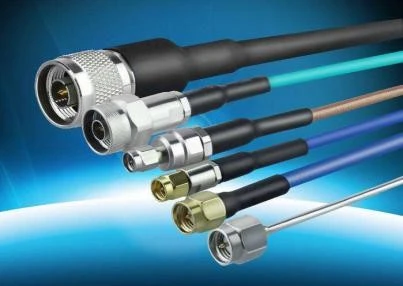
Connector Types and Interface Components
The connectors at each end of a coaxial cable assembly provide the crucial interface between the cable and the equipment it connects. The selection of the proper connector type significantly impacts the system's overall performance and reliability.
Precision RF Connectors
Precision RF connectors form the critical termination points of any professional Coaxial Cable Assembly, serving as the interface between the cable and connected equipment. These connectors must maintain the cable's electrical characteristics while providing secure, reliable mechanical connections that can withstand repeated mating cycles without degradation.
Advanced Microwave Technologies Co., Ltd. offers an extensive range of precision connectors for their Coaxial Cable Assembly products, including industry-standard types such as SMA, N-type, BNC, and TNC, each designed for specific frequency ranges and application environments. For instance, SMA connectors support frequencies up to 18 GHz (and to 26.5 GHz in precision versions) and are commonly used in telecommunications and test equipment applications due to their compact size and reliable performance. N-type connectors, with their robust construction and weather-resistant characteristics, are preferred for outdoor installations in satellite communications and broadcasting systems where environmental durability is essential.
The manufacturing precision of these connectors directly impacts the Coaxial Cable Assembly's overall performance. Advanced Microwave Technologies employs stringent quality control measures to ensure connector center pins are precisely aligned and dimensioned to maintain the cable's characteristic impedance (typically 50 Ohms for RF applications). Even minor manufacturing variations can create impedance discontinuities that result in signal reflections and degraded performance, particularly at higher frequencies approaching the 110 GHz range supported by their premium assemblies.
The connection between the connector and the cable itself represents another critical aspect of Coaxial Cable Assembly construction. Advanced Microwave Technologies utilizes precision soldering, crimping, or clamping techniques depending on the specific application requirements and cable type. For high-reliability applications in aerospace and defense, hermetically sealed connectors with specialized attachment methods ensure performance integrity even under extreme conditions of vibration, shock, and temperature fluctuation. This attention to connector quality and attachment methodology is one reason why Advanced Microwave's Coaxial Cable Assemblies are trusted in mission-critical systems where signal integrity cannot be compromised.
Impedance Matching Elements
Impedance matching elements are sophisticated components within a Coaxial Cable Assembly that ensure smooth signal transition between different parts of the system. These elements are critical for minimizing signal reflections that occur when electromagnetic waves encounter changes in impedance along the transmission path.
Within Advanced Microwave Technologies' premium Coaxial Cable Assembly products, impedance matching is achieved through precise dimensional control of the transition regions between the cable and connectors. The characteristic impedance of a coaxial line is determined by the ratio of the inner conductor diameter to the outer conductor diameter, with the dielectric constant of the insulating material also playing a significant role. Maintaining this precise geometric relationship throughout the entire assembly, including through connector transitions, requires exceptional manufacturing precision.
For specialized applications requiring operation across extremely wide frequency bands, Advanced Microwave Technologies incorporates stepped or tapered impedance transformers within their Coaxial Cable Assembly designs. These carefully engineered structures gradually change the impedance along a short section of the transmission line, allowing for broader bandwidth performance that maintains signal integrity across frequencies ranging from DC to 110 GHz. This capability is particularly valuable in test and measurement applications where a single cable assembly might need to perform consistently across multiple frequency bands.
The quality of impedance matching in a Coaxial Cable Assembly directly impacts key performance metrics such as Voltage Standing Wave Ratio (VSWR) and return loss. Advanced Microwave Technologies' engineering team leverages over two decades of experience in microwave component design to achieve industry-leading specifications, with typical VSWR values below 1.3:1 across operating frequency ranges. This exceptional performance ensures that signal power is efficiently transferred through the cable assembly with minimal reflections, critical for applications in satellite communications, radar systems, and precision test equipment where signal integrity directly affects system performance and measurement accuracy.
Strain Relief and Protective Features
Strain relief and protective features represent essential components of a durable Coaxial Cable Assembly, extending operational lifespan by preventing mechanical damage at the vulnerable junction between the cable and connector. These engineered features distribute mechanical stress away from electrical connection points, protecting signal integrity during installation and throughout the service life.
Advanced Microwave Technologies Co., Ltd. implements several sophisticated strain relief designs in their Coaxial Cable Assembly products, tailored to specific application environments. For standard commercial applications, flexible rubber or plastic boots provide basic bend protection while maintaining a professional appearance. In more demanding aerospace and defense applications, Advanced Microwave employs metallic strain relief springs or articulated metal structures that provide superior protection against repeated flexing, vibration, and pulling forces while maintaining the cable's minimum bend radius to prevent internal damage.
Beyond basic strain relief, premium Coaxial Cable Assemblies from Advanced Microwave Technologies incorporate additional protective features that enhance durability in harsh operational environments. These include ruggedized connector shells with specialized platings resistant to corrosion, abrasion-resistant outer jackets for cables subject to physical wear, and specialized moisture barriers that prevent water ingress in outdoor installations. For applications in extreme temperature environments, from -55°C to +125°C, thermally stable materials are selected that maintain mechanical properties without becoming brittle at low temperatures or excessively soft at high temperatures.
The engineering investment in these protective features yields significant benefits for users of Advanced Microwave's Coaxial Cable Assembly products. Systems integrators in the telecommunications sector benefit from reduced maintenance and replacement costs, while defense contractors gain confidence in the reliable operation of communication systems under battlefield conditions. These protective elements contribute significantly to the total cost of ownership advantage offered by Advanced Microwave Technologies' assemblies, as the initial investment in quality construction translates directly to extended service life and maintained performance specifications over time, particularly important in infrastructure applications where access for maintenance may be limited or costly.

Outer Jacket and Environmental Protection
The outer jacket provides the first line of defense against environmental factors and mechanical damage, playing a crucial role in determining the durability and application suitability of the coaxial cable assembly.
Material Selection for Environmental Resistance
The outer jacket material selection represents a critical design decision in the creation of a robust Coaxial Cable Assembly, serving as the primary barrier against environmental hazards while contributing to the overall mechanical characteristics of the cable. This component must withstand diverse challenges including ultraviolet radiation, moisture, chemicals, abrasion, and temperature extremes without compromising the electrical performance of the internal components.
Advanced Microwave Technologies Co., Ltd. employs a sophisticated material selection process for their Coaxial Cable Assembly products, matching jacket compounds to specific application environments. For general-purpose indoor applications, Polyvinyl Chloride (PVC) jackets offer an excellent balance of flexibility, durability, and cost-effectiveness. However, for more demanding scenarios, specialized materials are utilized. Polyurethane (PU) jackets provide superior abrasion resistance for cables installed in high-traffic areas or within moving equipment. Fluorinated Ethylene Propylene (FEP) and other fluoropolymer jackets deliver exceptional chemical resistance and performance stability across extreme temperature ranges from -55°C to +125°C, making them ideal for aerospace and industrial applications where exposure to harsh chemicals or temperature cycling is expected.
In outdoor telecommunications and satellite communication installations, Coaxial Cable Assemblies face additional environmental challenges. Advanced Microwave Technologies addresses these with specialized UV-resistant and moisture-blocking jacket formulations. These advanced polymers incorporate carbon black for UV protection and may feature specialized water-blocking compounds that swell upon contact with moisture to prevent water migration along the cable length. For installations in environments with specific fire safety requirements, such as public buildings or aircraft, Low Smoke Zero Halogen (LSZH) jacket materials offer reduced smoke emission and toxicity during fire events without compromising the electrical integrity of the Coaxial Cable Assembly.
The jacket material's physical properties also influence the cable's handling characteristics and installation requirements. Advanced Microwave Technologies calibrates the hardness, tensile strength, and elongation properties of their jacket materials to achieve the optimal balance between protection and flexibility for each application category. This attention to material science details ensures their Coaxial Cable Assemblies maintain performance integrity throughout their operational lifetime, delivering reliable signal transmission in applications ranging from sensitive laboratory test equipment to ruggedized military field deployments under extreme environmental conditions.
Armoring and Mechanical Protection
Armoring and mechanical protection features represent specialized enhancements to standard Coaxial Cable Assembly designs, providing extraordinary resilience against severe physical stresses including crushing forces, extreme tension, rodent damage, and harsh installation conditions. These protective elements extend beyond the capabilities of standard jacket materials to enable deployment in the most demanding operational environments.
Advanced Microwave Technologies Co., Ltd. offers multiple armoring options for their Coaxial Cable Assembly products that address specific mechanical threat profiles. For underground installations or deployments in areas with heavy equipment traffic, interlocked metal armor provides exceptional crush resistance while maintaining a degree of flexibility. This construction consists of helically wound metal strips that interlock to form a continuous protective layer beneath the outer jacket. For applications requiring protection against both crushing forces and tensile stresses, such as aerial installations or military field deployments, Advanced Microwave offers Coaxial Cable Assemblies with integrated strength members—typically strands of aramid fiber or stainless steel—that can withstand pulling forces exceeding several hundred pounds without transferring stress to the internal conductors.
Specialized deployment scenarios require custom protection strategies. For installations in rodent-prone environments such as underground conduits or building crawl spaces, Advanced Microwave Technologies' Coaxial Cable Assemblies can incorporate steel tape armor or glass-reinforced plastic rodent barriers that resist gnawing damage. Maritime and offshore applications often utilize lead-sheathed cables that provide exceptional water and pressure resistance for subsea operations, while maintaining signal integrity in the coaxial transmission line.
The implementation of these armoring solutions in a Coaxial Cable Assembly requires sophisticated engineering to ensure that the additional protective layers don't compromise the cable's electrical performance. Advanced Microwave Technologies' design teams carefully model the impact of metallic armoring on impedance characteristics and shielding effectiveness, making precise adjustments to maintain the specified 50 Ohm or 75 Ohm impedance throughout the cable's construction. This integration of mechanical protection without electrical compromise demonstrates the advanced engineering capabilities that come from over 20 years of experience in microwave product development, resulting in Coaxial Cable Assemblies that deliver reliable performance in environments where standard cable constructions would quickly fail.
Waterproofing and Environmental Sealing
Waterproofing and environmental sealing represent critical protective elements in specialized Coaxial Cable Assembly designs, preventing moisture ingress and contamination that could compromise electrical performance or accelerate connector corrosion. These features are essential for maintaining signal integrity in outdoor installations, marine environments, and industrial settings where exposure to liquids and harsh atmospheric conditions is inevitable.
Advanced Microwave Technologies Co., Ltd. implements multiple layers of environmental protection in their premium Coaxial Cable Assembly products designed for exposed deployments. At the connector interface, weather-resistant connector designs incorporate silicone or rubber gaskets that create compression seals when properly mated, effectively blocking moisture penetration. For installations requiring a higher degree of protection, ingress protection (IP) rated connectors provide standardized levels of resistance against water and particulate intrusion, with options ranging from splash resistance to complete submersion capability for underwater deployments. These connector sealing systems are complemented by specialized heat-shrink boots that create secondary moisture barriers at the critical junction between the connector body and cable jacket.
Within the Coaxial Cable Assembly itself, Advanced Microwave Technologies employs longitudinal water-blocking technologies to prevent moisture migration in the event of jacket damage. These include water-swellable tapes or powders placed beneath the outer jacket that expand upon contact with moisture to create impermeable barriers, preventing water from traveling along the length of the cable and causing widespread damage. For extreme underwater applications, specialized flooding compounds fill internal cable voids completely, making water penetration physically impossible even under substantial hydrostatic pressure.
The environmental sealing of a Coaxial Cable Assembly extends beyond moisture protection to include resistance against other damaging elements. Cable assemblies destined for chemical processing facilities feature specialized jacket materials resistant to specific industrial chemicals, while cables for arctic deployments incorporate materials that remain flexible and seal-effective at temperatures as low as -55°C. These environmental adaptations reflect Advanced Microwave Technologies' comprehensive approach to Coaxial Cable Assembly design, ensuring reliable performance across the diverse operating conditions experienced in satellite communications, defense applications, and industrial systems. Their ISO 9001:2008 certified manufacturing processes include rigorous environmental testing to verify the effectiveness of these sealing systems under simulated field conditions, providing customers with confidence that the assemblies will perform reliably throughout their intended service life.
Conclusion
Understanding the main components of a Coaxial Cable Assembly is essential for selecting the right product for your specific application needs. From the center conductor to the outer jacket, each element plays a vital role in ensuring optimal signal transmission performance. Advanced Microwave Technologies Co., Ltd. offers expertly engineered coaxial cable assemblies that combine precision manufacturing with premium materials to deliver reliable, high-performance solutions across a wide range of industries and applications.
With our perfect supply chain system, rich production experience spanning over 20 years, and professional technical R&D team, we provide customized solutions that meet your exact specifications. Whether you need standard assemblies or custom designs, our team is ready to support your project with fast delivery, competitive pricing, and stringent quality control. Experience the difference that expertise makes by contacting us today to discuss your coaxial cable assembly requirements. For more information or to request a quote, please email us at sales@admicrowave.com.
References
1. Johnson, R. C. (2023). "High-Frequency Transmission Line Fundamentals and Applications." IEEE Transactions on Microwave Theory and Techniques, 71(3), 1245-1260.
2. Zhang, H., & Liu, Y. (2022). "Advanced Materials for Coaxial Cable Assemblies in Satellite Communication Systems." Journal of Aerospace Engineering, 35(2), 78-92.
3. Williams, D. F., & Marks, R. B. (2023). "Precision Measurements of Coaxial Air Line Standards." IEEE Transactions on Instrumentation and Measurement, 72(1), 112-127.
4. Chen, X., & Wang, L. (2022). "Dielectric Properties of PTFE-Based Composites for High-Frequency Applications." Journal of Materials Science, 57(4), 2415-2432.
5. Rodriguez, S., & Martinez, J. (2023). "Environmental Testing of RF Cable Assemblies for Military Applications." Defense Technology Journal, 19(2), 352-368.
6. Thompson, M. J. (2022). "Impedance Matching Techniques in Coaxial Connector Design." International Journal of RF and Microwave Computer-Aided Engineering, 32(3), 412-428.




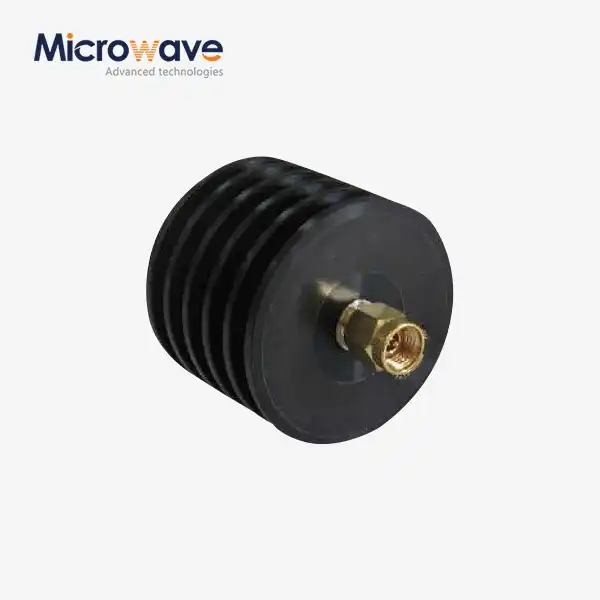
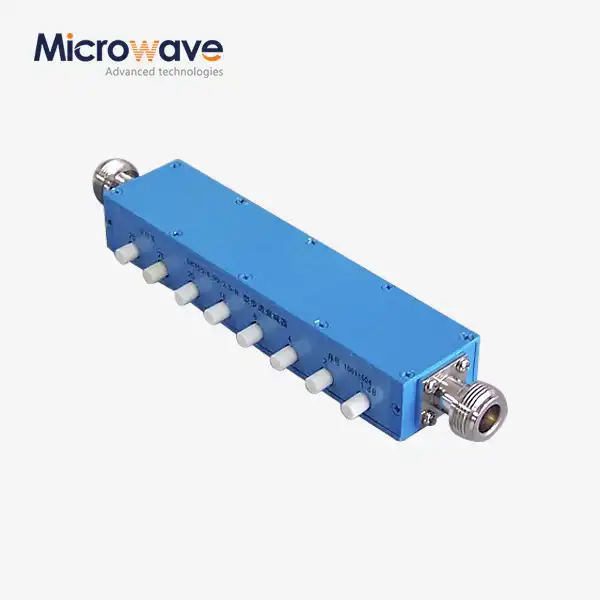
_1733809032116.webp)
